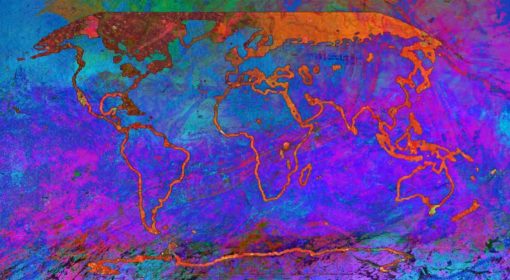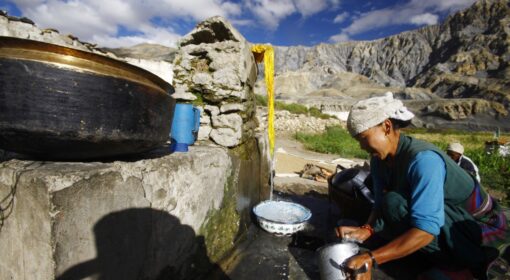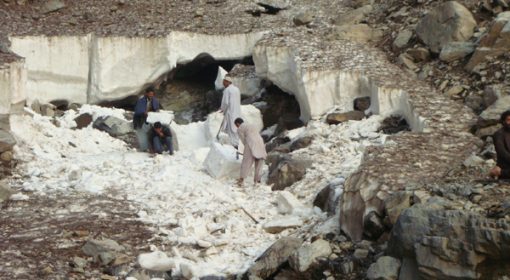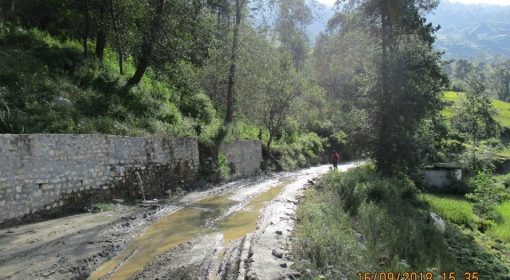{jcomments on}
 |
| Himalayas as seen from Garhwal, northern India. (Image courtesy: GoGarhwal) |
The Himalayan mountain range is also referred to as the world’s third pole. They are covered with over 15,000 glaciers: the highest concentration outside the Arctic and the Antarctic. Collectively, they hold about 12,000 cubic kilometers of freshwater that feed large river systems such as the Ganges and the Indus.
In 2007, the IPCC predicted that the Himalayan glaciers were “very likely” (>90% chance) to disappear by 2035. And that this had grave consequences for these river systems’ basins. By early 2010, further studies and investigations revealed that the claim was exaggerated, based on flimsy evidence. This discredited the IPCC. More importantly, this brought forth how little was known about what was actually going on with glaciers. Recent research has taken a more critical view of long standing assumptions, and found them wanting. For example,
- while it is true that around 1.2 billion people live downstream of these glaciers, they provide no more than 10% of their water needs.
- Most of the rivers downstream to the Himalayan glaciers are filled by monsoon rains, not glacial melt.
- Apart from getting warmer, the changing climate is also getting wetter. Increased snowfall means some glaciers gain mass, even as others shrink.
- Half the Himalayan glaciers are situated more than 5,500 metres above the sea level. This alone will make sure that the melting will not hit threatening levels any time soon.
- The glaciers that ARE melting are losing 1 or 2 feet of thickness every year. Some of them could disappear, but only by the end of the century.
(One medium-term threat, however, does remain validated. Rising temperatures put a large number of glacial lakes in the Himalayas at the risk of bursting their banks. The resultant deluge of water and debris can devastate low-lying regions. The film ’86 centimeters’ discusses the risk of such episodes in Bhutan. Watch the trailer)
 But this should not be taken to mean that all is well in the Himalayas. We tend to think of them as Water Towers of Asia, often forgetting that they are not just giant ice caps but also home to communities, flora and fauna. These communities and wildlife habitats are faced with immense water-related risks, mostly on account of population/ consumption pressures. Excessive groundwater pumping, in particular, has been identified as a key factor that has led to acute water scarcity.
But this should not be taken to mean that all is well in the Himalayas. We tend to think of them as Water Towers of Asia, often forgetting that they are not just giant ice caps but also home to communities, flora and fauna. These communities and wildlife habitats are faced with immense water-related risks, mostly on account of population/ consumption pressures. Excessive groundwater pumping, in particular, has been identified as a key factor that has led to acute water scarcity.
This is also reflected in the corrective/adaptive measures that have been suggested. A recent study by National Research Council in the United States recommends that in the face of scarcity (due to population pressures) and uncertainty (on account of climate variability), “the most compelling need is to improve water management and hazards mitigation systems.”
Here are some videos that show some ways in which Himalayan communities are experiencing climate change and water scarcity:
- Nepal: Melting Glaciers
- Tibetan Plateau: Green Glaciers: the Melting Grasslands…
- Nepal: From Kathmandu to Copenhagen – climate change
- Nepal: Child Voices Nepal
At a more macro-level, however, national governments do view the Himalayas largely as water storage facilities. The transboundary flow of the great glacial rivers unites the Himalayan countries hydrologically, but competing diversion plans threaten to be a major bone of contention in the near future. Over the next 30 years, India and China aim to build 200 dams and dozens of mega diversion structures, to provide a staggering 250,000 MW for their rapidly growing populations and sprouting factories.

China’s flagship project is the $65 billion south-north water transfer project, which aims to divert 45 billion cubic metres annually from Yangtze and its tributaries towards northern China, including capital Beijing). (Watch: China’s mega water project hopes to quench the parched north) Among other effects, this would lead to reduced flows in the Yarlung-Zangbo river, known as the Brahmaputra as it flows into India. Work on the project has only just begun, but diplomatic tensions between the two countries are already running high. India’s grand plans include linking major Himalayan and other rivers within its territory, and divert them south to drought-prone areas. Bangladesh fears that this could aggravate its water problems: drying rivers, salinization and high arsenic-levels in the groundwater.
And these are just two big ones among the numerous such projects in the region. Apart from having adverse impacts on international relations, most of them are likely to come at considerable environmental costs.
As the IPCC’s claims were debunked in 2010, it was heartening to know that the Himalayan glaciers would not be lost to global warming anytime soon. However, with international tensions rising over diversion of transboundary rivers, the ‘third pole‘ is fast becoming quite a hotspot. To prevent environmental degradation and uphold water rights, it is imperative that diplomatic sense prevails and the affected countries work together regional water sharing agreements.



